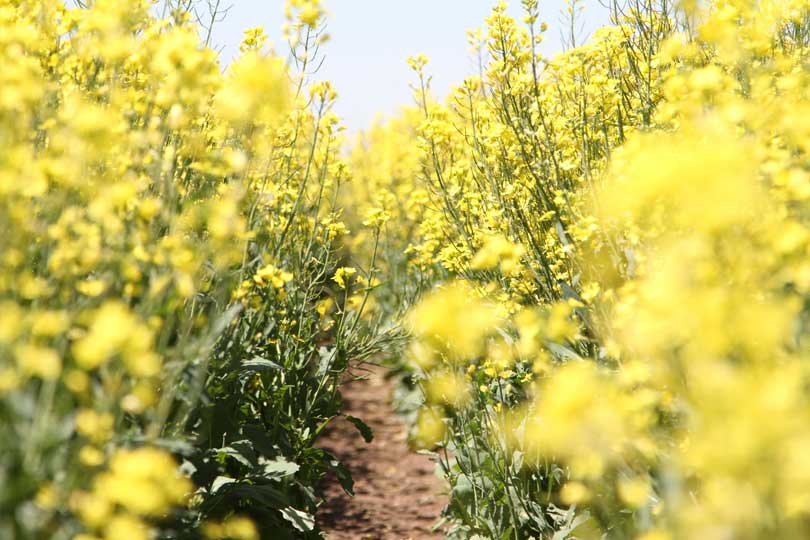By Shala Watson
TFB Public Relations Intern
Fields of winter wheat dot the Texas countryside. But a bright yellow crop—canola—has been breaking up those amber waves of grain. And Lone Star Family Farms in Sunray was one of the first farms in the Texas Panhandle to plant the crop nearly 10 years ago. Since then, it’s become a staple crop in the family business.
They grow canola for seed production. But, because it is has a low erucic acid content, it can be used for cooking oil and high-quality protein for livestock.
Some of the largest canola production areas are around Vernon, Oklahoma City and the southern parts of Kansas. But the high-value crop is growing in popularity across Texas, working well in a rotation for farmers with a continuous wheat program.
Planting the low input, economical crop breaks the disease cycles that grow with a continuous cropping program. Less disease pressure and fewer insect issues aren’t the only benefits. Canola can also boost wheat yields.
“If you are close to a good market and you’re in a continuous wheat program, it’s a very good option. It allows those [farmers] to be successful,” said Justin Crownover, family partner with Lone Star Family Farms. “It improves their yields on their wheat and then allows them to get a good price the years that they grow canola on the same ground.”
Crownover noted the seed has a higher value, and it works well into rotation on farms that can’t grow other added-value crops.
“One of the things that’s advantageous for us is that we are able to put the corn back in behind this because of the early harvest interval,” Crownover said. “The way we harvest it allows us to utilize the moisture that is still in the soil from that profile. Typically, we will put 18-20 inches of water on the canola through the growing season.”
They begin planting canola in September with a two-week window to get it in the ground. Crownover said the crop is usually harvested in June, depending on how the growing season goes.
“We’ve harvested as early as June 5, and we’ve harvested as late as June 25. So it will all be based upon what Mother Nature gives us,” he said.
Harvest begins when about half the seeds have turned a brown-black color.
“We will put it in a windrow on the ground and let it sit from one to three days,” Crownover said.
And the outside temperatures and seed moisture will determine when they finish harvest.
It’s a crop that’s sometimes mistaken for mustard weed. But, even so, it has a bright future in Texas and on the Lone Star Family Farms.

